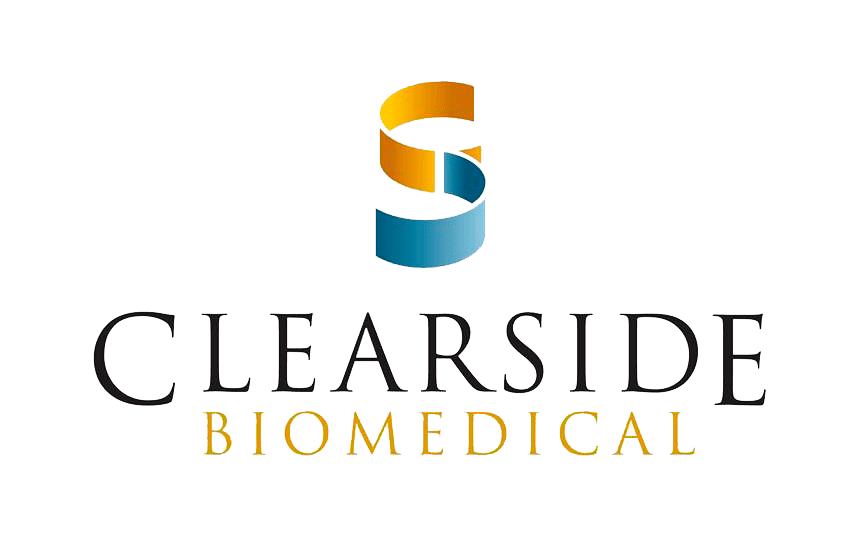RVO is a particularly aggressive eye disease resulting from an occlusion in a vein carrying blood out of the retina. This blockage can lead to the rapid onset of symptoms, including sudden declines in vision. SAPPHIRE, a multicenter, multi-country, randomized, masked, controlled Phase 3 clinical trial, has enrolled 460 patients who are naïve to pharmacologic treatment for RVO. The SAPPHIRE study will assess whether using suprachoroidal CLS-TA in combination with intravitreal Eylea may offer an opportunity for earlier improved visual outcomes for RVO patients compared to Eylea monotherapy, and is also designed to evaluate required treatment frequency for the combination arm compared to the Eylea-alone control arm over the course of the trial.
“We expect to report topline 8-week primary endpoint data from the SAPPHIRE trial in the fourth quarter of 2018,” said
More details about Clearside’s RVO clinical development program are available via the company’s current corporate presentation, which can be accessed at http://ir.clearsidebio.com/events-and-presentations.
About Suprachoroidal CLS-TA
Suprachoroidal CLS-TA, Clearside’s first investigational treatment, is a proprietary suspension of the corticosteroid triamcinolone acetonide formulated for administration to the back of the eye via the suprachoroidal space, or SCSTM, which is the space located between the choroid and the outer protective layer of the eye known as the sclera. CLS-TA has been observed to reduce inflammation and other complications that lead to swelling of the macula, a leading cause of visual impairment and blindness. Clearside’s proprietary suprachoroidal treatment approach is designed to enable rapid dispersion of a high amount of medicine to the back of the eye so that adequate medicine reaches and stays at the site of disease and has potential to act longer. This approach has potential to provide efficacy advantages and require fewer treatments and office visits while minimizing harm to the surrounding healthy parts of the eye.
Suprachoroidal CLS-TA, used either alone or together with an intravitreal anti-VEGF agent, is being studied as part of Clearside’s pipeline of treatments for unmet or underserved sight-threatening eye diseases that manifest in the retina and the choroid.
About Retinal Vein Occlusion and the SAPPHIRE Trial
RVO is a sight-threatening disorder resulting from a blockage of one or more of the veins carrying blood out of the retina. This blockage can lead to bleeding within the retina and the additional fluid can cause swelling resulting in macular edema. This bleeding and macular edema can affect central vision. According to a 2010 study published in the journalOphthalmology, RVO is estimated to affect more than 16 million adults worldwide. Of those, Clearside estimates approximately 2.2 million reside in
As RVO is one of the most aggressive retinal vascular diseases that can lead to vision impairment and potential permanent vision loss, there is a strong need to develop new treatment approaches that are both effective and more durable than currently approved therapies.
SAPPHIRE is a multicenter, multi-country, randomized, masked, controlled Phase 3 clinical trial of suprachoroidal CLS-TA used in combination with intravitreally administered Eylea for the treatment of RVO. Patients randomized into the combination arm will receive suprachoroidal CLS-TA together with intravitreal Eylea at the beginning of the trial, intravitreal Eylea alone at week 4, and suprachoroidal CLS-TA together with intravitreal Eylea at weeks 12 and 24. Patients randomized into the control arm will receive intravitreal Eylea alone at the beginning of the trial and follow-up treatments of intravitreal Eylea alone every four weeks through week 24. The primary endpoint of this trial is the proportion of patients in the combination treatment arm, compared to the intravitreal Eylea-alone control arm, with improvements in best corrected visual acuity from baseline of at least 15 letters on the Early Treatment Diabetic Retinopathy Study (“ETDRS”) scale at eight weeks after initial treatment. Safety and efficacy analyses will also be conducted at the 24-week visit and at an end of year study exit visit.
About Clearside
Cautionary Note Regarding Forward-Looking Statements
Any statements contained in this press release that do not describe historical facts may constitute forward-looking statements as that term is defined in the Private Securities Litigation Reform Act of 1995. These statements may be identified by words such as “believe”, “expect”, “may”, “plan”, “potential”, “will”, and similar expressions, and are based on Clearside’s current beliefs and expectations. These forward-looking statements include expectations regarding the clinical development of Clearside’s product candidates, including the timing of topline data from the SAPPHIRE trial, the potential attributes and benefits of Clearside’s product candidates, and the timing of a potential submission of an NDA with the FDA. These statements involve risks and uncertainties that could cause actual results to differ materially from those reflected in such statements. Risks and uncertainties that may cause actual results to differ materially include uncertainties inherent in the conduct of clinical trials, Clearside’s reliance on third parties over which it may not always have full control, and other risks and uncertainties that are described in Clearside’s Annual Report on Form 10-K for the year ended



